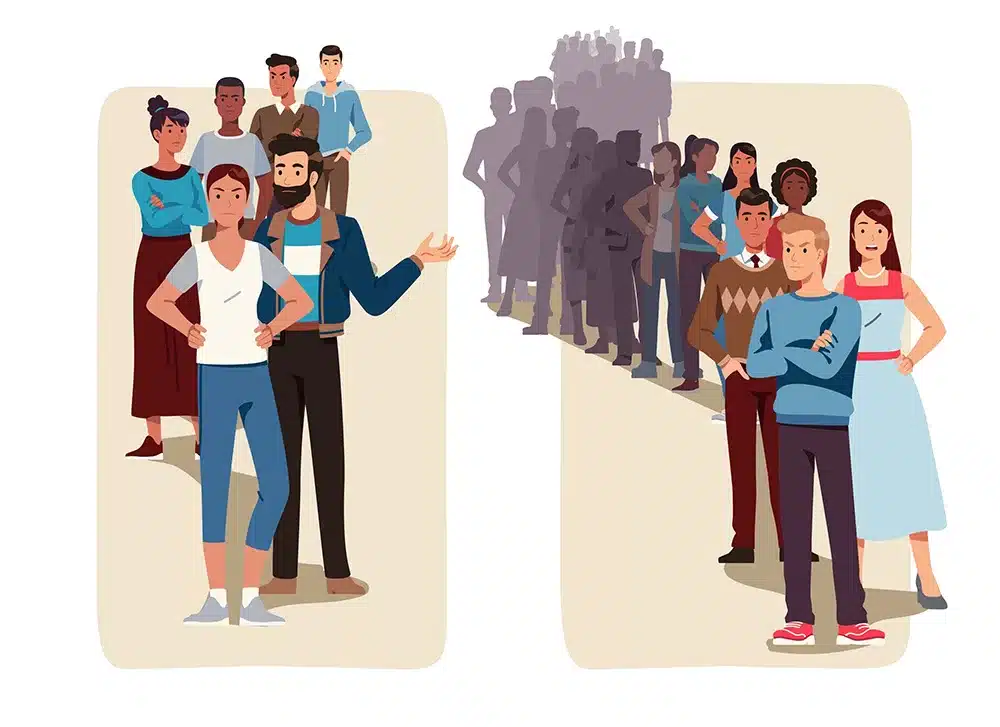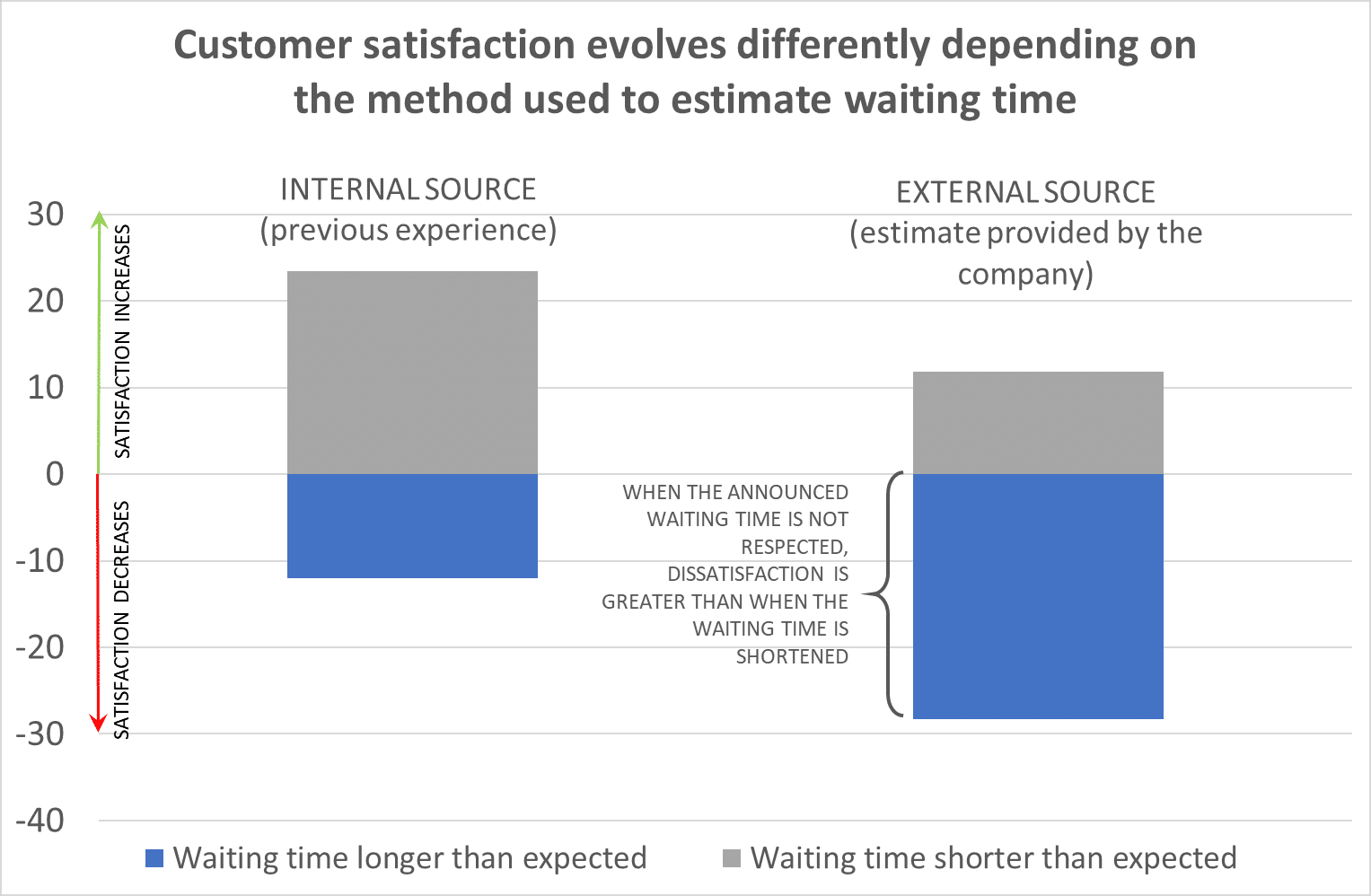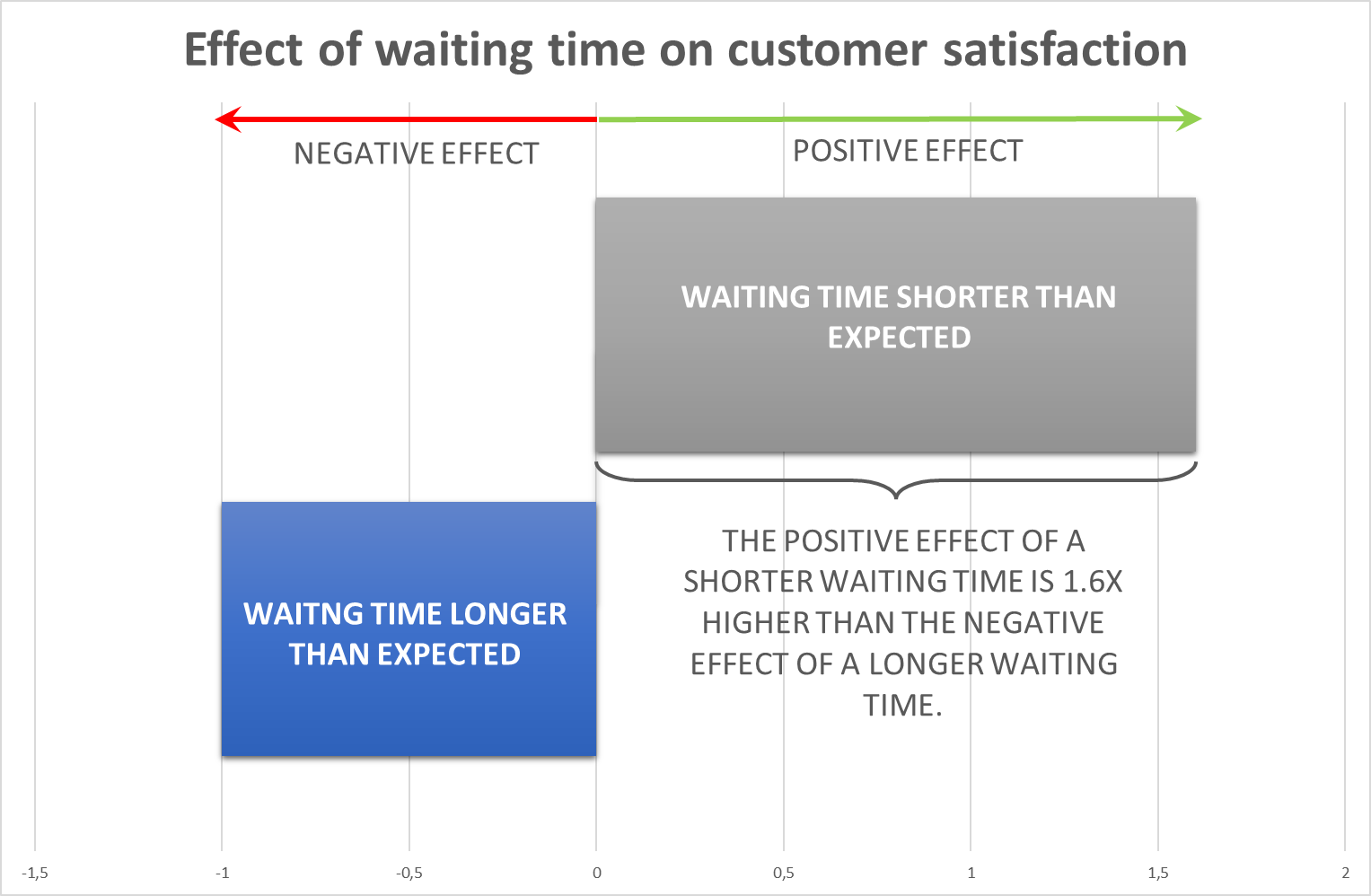Waiting time has an impact on customer satisfaction. Research published in 2023 reveals 3 specific findings that help companies understand how to manage waiting time to maximize customer satisfaction.

Customer satisfaction is a complex issue, particularly in the world of retail. In retail, waiting time is one of the most crucial factors. In this article, we propose to unravel its secrets. You can then use this knowledge to maximize customer satisfaction, whether your store is online or offline.
Consult IntoTheMinds for your customer satisfaction surveys
Waiting times and customer satisfaction: some figures
- 91%of store managers believe that the effect of a longer-than-expected waiting time is greater than that of a shorter-than-expected waiting time. The opposite is true.
- The effect of a shorter waiting time is 6 times greater than that of a longer one.
- Customer dissatisfaction skyrockets when waiting time exceeds customer expectations by 262%.
Research published in March 2023 in the Journal of Retailing provides a precise understanding of how waiting times influence customer satisfaction. The authors have gone much further than has ever been done before. Their research reveals 3 main insights:
- The impact of a shorter-than-expected waiting time on customer satisfaction differs from the one anticipated by retailers.
- Customer satisfaction will fall if a company exceeds its self-advertised waiting time. The magnitude of this drop will be greater than an increase in satisfaction due to a lower-than-expected waiting time.
Excessively lengthy waiting times cause customer dissatisfaction to skyrocket.

Result 1: Ensure customers wait for less time than they had anticipated
The first result helps us to understand how consumers value their time when they must wait. More specifically, the research shows why consumers value time saved more than time lost.
In the first experiment, the authors measured what is known as “disconfirmation.” This is the technical term for the difference between a customer’s expectations and what they receive. When disconfirmation is positive, the customer is satisfied; when it is negative (i.e., his expectations are higher than what he receives), the customer is dissatisfied. This comparison mechanism is a classic in the scientific literature and works very well.
The results are surprising. Simply put, a shorter waiting time than expected will have a greater effect on satisfaction than a longer waiting time would have on dissatisfaction. The sentence is complicated to understand, so we’ve summarized this conclusion visually (see above).
You can see that the effect of a shorter waiting time than expected is 1.6x higher than that of a longer waiting time. Retailers would be well advised to invest in reducing waiting times.
The authors also clarify why the effects could be more symmetrical. Time saved is more valuable than time “lost.” Indeed, when the wait lasts a few minutes longer than the consumer had anticipated, the latter asks, “What would I have done with those few lost minutes anyway?”.

Result 2: be careful with the waiting time estimates you communicate
The question arises about how the customer estimates his waiting time a priori. There are 2 ways of doing this:
- Internally: they refer, for example, to the length of the queue or their previous experience
- Externally: the company provides the customer with an estimated waiting time.
The results show that the estimated source has an opposite influence on customer satisfaction (see graph below). When the estimate is internal and the waiting time is shorter than expected, customer satisfaction increases by 23.43 points out of 100. When the estimate is external and the waiting time is longer than expected, the drop is 28.29 points.
 For companies, the second result is, of course, the most interesting. It has become quite common to tell customers how long they’ll have to wait, for example, when trying to reach customer service. In this case, this research tells us that telling the customer how long they’ll have to wait is in your best interest. The risk of waiting longer than estimated is high (-28.29 satisfaction points out of 100).
For companies, the second result is, of course, the most interesting. It has become quite common to tell customers how long they’ll have to wait, for example, when trying to reach customer service. In this case, this research tells us that telling the customer how long they’ll have to wait is in your best interest. The risk of waiting longer than estimated is high (-28.29 satisfaction points out of 100).

Result 3: Beware of excessively long waiting times
The final finding of this research concerns excessively lengthy waiting times. What the authors show is that when the customer waits, his satisfaction does not decrease linearly. Beyond a certain threshold, customer satisfaction falls much more rapidly.
This threshold corresponds to 262% of the anticipated waiting time.

What can be done to improve customer satisfaction?
This research provides concrete guidelines for companies to act positively on customer satisfaction.
Primarily, customers should not be kept waiting. But even more important is to make them wait less than expected. Given that waiting time is almost always human, this can be achieved by reinforcing staffing levels at critical moments. In the case of physical stores, this can also mean using additional self-checkouts to reduce waiting times.
Secondly, the customer must be given a set waiting time, which must not be exceeded. It is advisable to communicate a higher waiting time than is estimated. This will minimize the likelihood of overruns and provide you with a small gain in customer satisfaction in the event of a shorter wait than announced.
Finally, every company should estimate the waiting time the customer considers reasonable. Above the threshold of 262%, satisfaction decreases more rapidly. This estimate may be easier to implement than you think. When a customer wants to reach a company by telephone, it is enough to ask about the expected waiting time. The average over several hundred calls would assess the threshold not to be exceeded.
Posted in Research.


